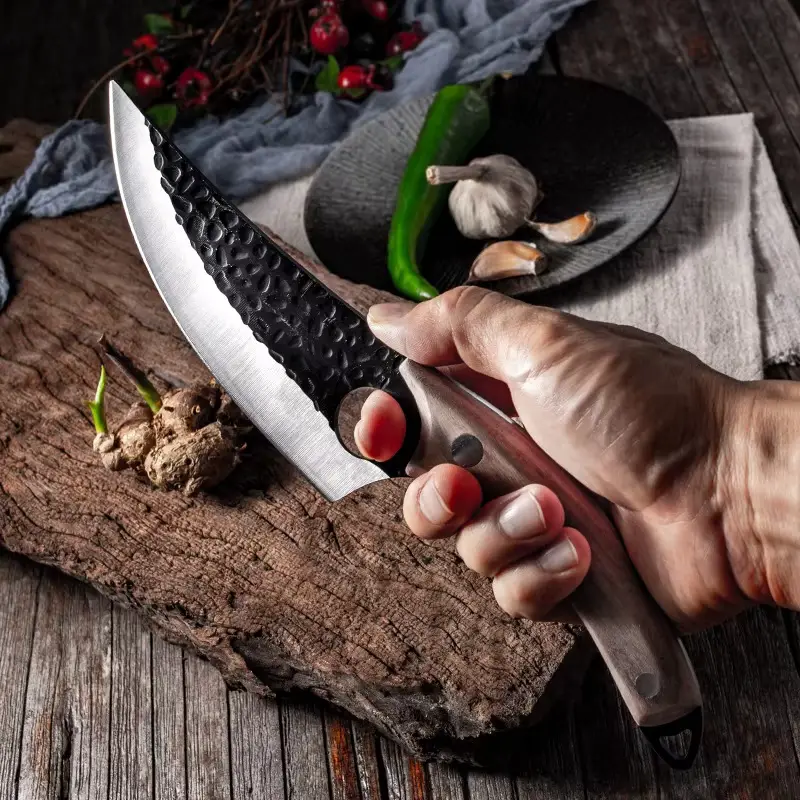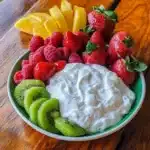In our home, weeknight dinners are often a balancing act between deliciousness and speed. Like many families, we crave meals that are both satisfying and relatively quick to prepare after a long day. That’s where these Crispy Vegetable Tenders have become an absolute lifesaver, and a family favorite! Initially, I was skeptical – could vegetables really satisfy that craving for crispy, savory goodness that everyone loves in classic tenders? The answer, unequivocally, is YES! My kids, who can be picky eaters, devoured these. The crispy coating gives way to tender, flavorful vegetables inside, and the dipping sauce options are endless. What started as an experiment has quickly become a regular request, proving that healthy and delicious can absolutely coexist, even for the most discerning palates. Whether you’re looking to incorporate more vegetables into your diet, cater to vegetarian preferences, or simply try a fun and tasty new recipe, these Crispy Vegetable Tenders are sure to be a hit in your kitchen too.
Ingredients: The Building Blocks of Crispy Vegetable Goodness
This recipe focuses on using fresh, wholesome ingredients to create crispy and flavorful vegetable tenders. Here’s what you’ll need:
- Cauliflower Florets: (About 1 large head) – The star of our tenders! Cauliflower provides a hearty and slightly sweet base that perfectly soaks up flavors and holds its shape during cooking.
- Broccoli Florets: (About 1 medium head) – Adds a vibrant green color and a slightly earthy flavor that complements the cauliflower. Broccoli also provides a good textural contrast.
- Carrots: (2 large, peeled and cut into sticks) – For sweetness and a satisfying crunch. Carrots add a touch of natural sweetness and beautiful color to the mix.
- Zucchini: (2 medium, cut into sticks) – Provides a mild flavor and tender texture when cooked. Zucchini is a great way to add moisture and bulk to the tenders.
- Chickpea Flour (Besan): (1 cup) – This is the base of our batter, offering a naturally gluten-free and protein-rich option. Chickpea flour creates a beautifully crispy and golden crust.
- Rice Flour: (1/2 cup) – Adds extra crispness and lightness to the batter. Rice flour helps to achieve that desirable shatteringly crispy texture.
- Cornstarch: (1/4 cup) – Another secret weapon for achieving ultimate crispiness. Cornstarch helps to create a light and airy coating.
- Spices: (Turmeric powder, 1 tsp; Paprika, 1 tsp; Garlic powder, 1 tsp; Onion powder, 1 tsp; Dried oregano, 1 tsp; Salt and black pepper to taste) – A blend of aromatic spices to infuse the batter with flavor. These spices create a savory and slightly smoky flavor profile.
- Plant-based Milk (Unsweetened): (About 1 cup) – Used to create the batter consistency. Choose your favorite unsweetened plant-based milk – almond, soy, oat, or cashew all work well.
- Breadcrumbs (Panko for extra crispiness): (2 cups) – The final coating that creates the signature crispy exterior. Panko breadcrumbs are highly recommended for their superior crispiness, but regular breadcrumbs can also be used.
- Olive Oil (or vegetable oil) for frying: (As needed) – For shallow frying the tenders to golden perfection. Choose a neutral oil with a high smoke point.
Instructions: Step-by-Step Guide to Crispy Vegetable Tenders
Follow these detailed instructions to create perfectly crispy and delicious vegetable tenders every time:
Step 1: Prepare the Vegetables
- Wash and Cut: Thoroughly wash all the vegetables. Cut the cauliflower and broccoli into bite-sized florets, ensuring they are roughly similar in size for even cooking. Peel the carrots and zucchini and cut them into sticks that are about the same length and thickness as your florets – think “tender” size. Uniformity in size is key for even cooking and a consistent texture in your tenders.
- Blanch the Vegetables (Optional but Recommended): Blanching helps to partially cook the vegetables, ensuring they are tender on the inside while the outside gets crispy. Bring a pot of salted water to a boil. Add the cauliflower and broccoli florets and blanch for 2-3 minutes. Then add the carrot and zucchini sticks and blanch for another 1-2 minutes. Immediately transfer the blanched vegetables to an ice bath to stop the cooking process and preserve their vibrant color. Drain well and pat dry with paper towels. Blanching ensures the vegetables are tender and not raw inside after frying, while the ice bath keeps them crisp and colorful.
Step 2: Prepare the Batter
- Combine Dry Ingredients: In a large bowl, whisk together the chickpea flour, rice flour, cornstarch, turmeric powder, paprika, garlic powder, onion powder, dried oregano, salt, and black pepper. Whisking ensures all the spices are evenly distributed throughout the flour mixture.
- Add Plant-Based Milk Gradually: Gradually pour in the plant-based milk while whisking continuously to prevent lumps from forming. Continue adding milk until you achieve a smooth batter that is similar in consistency to pancake batter – it should be thick enough to coat the vegetables but still pourable. The batter consistency is crucial for proper coating and crispiness. If it’s too thick, add a little more milk; if it’s too thin, add a bit more chickpea flour or cornstarch.
- Rest the Batter (Optional): Let the batter rest for about 10-15 minutes. This allows the flours to fully hydrate, resulting in a smoother and more cohesive batter. Resting the batter also helps the gluten (if any from cross-contamination in flours) to relax, contributing to a tenderer texture.
Step 3: Bread the Vegetable Tenders
- Prepare Breadcrumbs: Place the panko breadcrumbs (or regular breadcrumbs) in a shallow dish. You can season the breadcrumbs with a pinch of salt and pepper or any other desired herbs for extra flavor, if you wish.
- Dredge in Batter and Breadcrumbs: Take a piece of blanched vegetable (cauliflower, broccoli, carrot, or zucchini) and dip it into the prepared batter, ensuring it is fully coated. Let any excess batter drip off. Then, immediately dredge the batter-coated vegetable in the breadcrumbs, pressing gently to ensure the breadcrumbs adhere evenly to all sides. Repeat this process for all the vegetables. Work in batches to prevent overcrowding and ensure each vegetable piece is well-coated.
Step 4: Fry the Vegetable Tenders
- Heat the Oil: Pour enough olive oil (or vegetable oil) into a large skillet or deep frying pan to reach a depth of about ½ inch. Heat the oil over medium-high heat until it is hot enough for frying. You can test the oil temperature by dropping a few breadcrumbs into the oil – if they sizzle and turn golden brown quickly, the oil is ready. Maintain a consistent oil temperature for even cooking and crispiness. If the oil is not hot enough, the tenders will absorb too much oil and become greasy; if it’s too hot, they will brown too quickly on the outside and may be undercooked inside.
- Fry in Batches: Carefully place the breaded vegetable tenders into the hot oil in a single layer, being careful not to overcrowd the pan. Overcrowding will lower the oil temperature and result in soggy tenders. Fry in batches, leaving enough space between the tenders.
- Fry until Golden Brown and Crispy: Fry the tenders for about 3-4 minutes per side, or until they are golden brown and crispy on all sides. Flip them gently halfway through cooking using tongs or a slotted spoon. Monitor the color closely to prevent burning.
- Drain Excess Oil: Once cooked, remove the crispy vegetable tenders from the skillet and place them on a wire rack lined with paper towels to drain excess oil. A wire rack allows air to circulate around the tenders, keeping them crispy instead of becoming soggy on the bottom.
Step 5: Serve and Enjoy!
- Serve Immediately: Crispy vegetable tenders are best served immediately while they are still hot and crispy.
- Pair with Dipping Sauces: Serve with your favorite dipping sauces. (See “How to Serve” section for sauce suggestions).
- Garnish (Optional): Garnish with fresh herbs like parsley or cilantro for a pop of color and freshness.
Nutrition Facts: A Healthier Take on Tenders
(Approximate values per serving, serving size: 4-5 tenders. Nutritional values can vary based on specific ingredients used and portion sizes.)
- Calories: 250-300 kcal
- Protein: 8-10g
- Fat: 12-15g (depending on oil absorption)
These Crispy Vegetable Tenders offer a significantly healthier alternative to traditional chicken tenders. They are packed with fiber and nutrients from the vegetables, and using chickpea flour adds a good source of plant-based protein. While frying does add fat, you can reduce oil absorption by maintaining the correct oil temperature and draining the tenders properly.
Preparation Time: From Prep to Plate
- Prep Time: 25-30 minutes (includes vegetable washing, cutting, blanching, and batter preparation)
- Cook Time: 20-25 minutes (frying in batches)
- Total Time: 45-55 minutes
This recipe is relatively quick to prepare, especially if you streamline the vegetable prep. Blanching adds a few extra minutes but significantly improves the final texture and tenderness of the vegetables. It’s a perfect option for a satisfying and relatively fast weeknight meal.
How to Serve: Creative Ways to Enjoy Your Crispy Vegetable Tenders
Crispy Vegetable Tenders are incredibly versatile! Here are some delicious ways to serve them:
- Classic Dipping Sauces:
- Vegan Ranch: Creamy, tangy, and always a crowd-pleaser.
- Honey Mustard (Vegan version with maple syrup): Sweet and savory, a perfect balance.
- BBQ Sauce: Smoky and bold, for a more robust flavor.
- Sweet Chili Sauce: Adds a touch of heat and sweetness.
- Marinara Sauce: For a Mediterranean twist.
- Sriracha Mayo (Vegan): Spicy and creamy, for those who like a kick.
- Meal Ideas:
- Tender Baskets: Serve in baskets with a side of crispy fries (sweet potato or regular) and coleslaw for a classic “tenders and fries” experience.
- Vegetable Tender Wraps: Wrap tenders in warm tortillas or pita bread with hummus, lettuce, tomatoes, and your favorite sauce for a quick and healthy lunch or dinner.
- Tender Salads: Top a fresh garden salad with crispy vegetable tenders for added protein and crunch. A great way to make a salad more substantial and satisfying.
- Tender Bowls: Create Buddha bowls with a base of quinoa or rice, roasted vegetables, avocado, and crispy vegetable tenders.
- Party Appetizers: Arrange tenders on a platter with various dipping sauces for a fun and crowd-pleasing appetizer at parties or gatherings.
- Side Dishes:
- French Fries (Regular or Sweet Potato): The classic pairing!
- Coleslaw: A refreshing and creamy side that complements the crispy tenders.
- Corn on the Cob: Grilled or boiled, a simple and summery side.
- Roasted Vegetables: Serve with other roasted vegetables like potatoes, bell peppers, or onions for a complete and balanced meal.
- Mac and Cheese (Vegan): For ultimate comfort food indulgence.
Additional Tips for Perfect Crispy Vegetable Tenders
Here are 8 essential tips to ensure your Crispy Vegetable Tenders are always a success:
- Don’t Skip Blanching: Blanching the vegetables is crucial for achieving the perfect texture. It ensures they are tender inside and not raw, even after frying. It also helps to retain their vibrant color and prevents them from becoming mushy.
- Pat Vegetables Dry: After blanching and draining, make sure to pat the vegetables thoroughly dry with paper towels. Excess moisture will prevent the batter from sticking properly and can lead to soggy tenders. Dry vegetables are key for a crispy coating.
- Batter Consistency is Key: Aim for a batter consistency similar to pancake batter – thick enough to coat but still pourable. If the batter is too thick, it will be heavy and cakey; if it’s too thin, it won’t coat the vegetables properly. Adjust with plant-based milk or chickpea flour/cornstarch as needed.
- Panko Breadcrumbs for Extra Crispiness: Panko breadcrumbs are larger and flakier than regular breadcrumbs, resulting in a significantly crispier coating. They are highly recommended for this recipe. If using regular breadcrumbs, you can toast them lightly in a dry pan for added crispness before using.
- Don’t Overcrowd the Pan: Fry the tenders in batches, ensuring you don’t overcrowd the pan. Overcrowding lowers the oil temperature, which leads to soggy and greasy tenders. Fry in single layers with enough space between each piece.
- Maintain Oil Temperature: Keep the oil temperature consistent throughout frying. Use a thermometer if possible to maintain a temperature of around 350-375°F (175-190°C). If the oil is too cold, the tenders will absorb too much oil; if it’s too hot, they will brown too quickly on the outside and may be undercooked inside.
- Drain Excess Oil Properly: After frying, place the tenders on a wire rack lined with paper towels to drain excess oil. A wire rack allows air to circulate underneath, preventing the bottom from becoming soggy.
- Serve Immediately for Best Crispiness: Crispy Vegetable Tenders are best enjoyed immediately while they are hot and crispy. The longer they sit, the more the coating can soften. If you need to keep them warm for a short period, place them in a single layer on a wire rack in a warm oven (200°F/95°C). Avoid stacking them, as this will trap steam and make them soggy.
FAQ: Your Crispy Vegetable Tender Questions Answered
Q1: Can I use different vegetables for these tenders?
A: Absolutely! This recipe is very versatile. You can use other vegetables like bell peppers (cut into strips), eggplant (cubed), or even mushrooms (large pieces). Just ensure you cut them into similar sizes for even cooking and consider blanching harder vegetables like potatoes or sweet potatoes.
Q2: Can I make these gluten-free?
A: Yes, this recipe is naturally gluten-free when using chickpea flour and rice flour. Always double-check that your breadcrumbs are certified gluten-free if you require strict gluten-free adherence, as some breadcrumbs may contain wheat. Panko breadcrumbs are often gluten-free, but always verify the packaging.
Q3: Can I bake these tenders instead of frying?
A: While frying gives the best crispy results, you can bake them for a healthier option. Preheat your oven to 400°F (200°C). Place the breaded tenders on a baking sheet lined with parchment paper. Spray them lightly with cooking oil. Bake for 20-25 minutes, flipping halfway through, until golden brown and crispy. Baking will result in a less crispy texture compared to frying, but it’s still a delicious and healthier alternative.
Q4: Can I prepare the batter and breadcrumbs ahead of time?
A: Yes, you can prepare the batter and breadcrumbs ahead of time. The batter can be made up to a few hours in advance and stored in the refrigerator. You might need to add a tablespoon or two of plant-based milk to thin it out if it thickens upon standing. Breadcrumbs can be prepared and kept at room temperature. However, it’s best to bread and fry the tenders just before serving for optimal crispiness.
Q5: How do I store leftover vegetable tenders?
A: Leftover vegetable tenders are best stored in an airtight container in the refrigerator for up to 2-3 days. However, they will lose some of their crispiness upon refrigeration.
Q6: How do I reheat leftover vegetable tenders to make them crispy again?
A: To reheat leftover vegetable tenders and try to regain some crispiness, the best method is to reheat them in an oven or air fryer. Preheat your oven or air fryer to 350°F (175°C). Place the tenders in a single layer and reheat for 10-15 minutes, or until heated through and slightly crispy again. Microwaving is not recommended as it will make them soggy.
Q7: Can I make these vegan?
A: Yes, this recipe is naturally vegan as it uses plant-based milk and no animal products. Ensure your chosen breadcrumbs are also vegan (some may contain dairy).
Q8: What if my breadcrumbs are not sticking to the batter?
A: If your breadcrumbs are not sticking, ensure the batter consistency is correct (not too thin). Also, make sure you are pressing the breadcrumbs firmly onto the batter-coated vegetables to help them adhere. Letting the batter rest for a few minutes after coating and before breading can also help the coating become slightly tackier, improving breadcrumb adhesion. If still having trouble, you can try a “double dredge” – batter, breadcrumbs, then batter again, then breadcrumbs again for a thicker and stickier coating.

Crispy Chicken Tenders Recipe
Ingredients
This recipe focuses on using fresh, wholesome ingredients to create crispy and flavorful vegetable tenders. Here’s what you’ll need:
- Cauliflower Florets: (About 1 large head) – The star of our tenders! Cauliflower provides a hearty and slightly sweet base that perfectly soaks up flavors and holds its shape during cooking.
- Broccoli Florets: (About 1 medium head) – Adds a vibrant green color and a slightly earthy flavor that complements the cauliflower. Broccoli also provides a good textural contrast.
- Carrots: (2 large, peeled and cut into sticks) – For sweetness and a satisfying crunch. Carrots add a touch of natural sweetness and beautiful color to the mix.
- Zucchini: (2 medium, cut into sticks) – Provides a mild flavor and tender texture when cooked. Zucchini is a great way to add moisture and bulk to the tenders.
- Chickpea Flour (Besan): (1 cup) – This is the base of our batter, offering a naturally gluten-free and protein-rich option. Chickpea flour creates a beautifully crispy and golden crust.
- Rice Flour: (1/2 cup) – Adds extra crispness and lightness to the batter. Rice flour helps to achieve that desirable shatteringly crispy texture.
- Cornstarch: (1/4 cup) – Another secret weapon for achieving ultimate crispiness. Cornstarch helps to create a light and airy coating.
- Spices: (Turmeric powder, 1 tsp; Paprika, 1 tsp; Garlic powder, 1 tsp; Onion powder, 1 tsp; Dried oregano, 1 tsp; Salt and black pepper to taste) – A blend of aromatic spices to infuse the batter with flavor. These spices create a savory and slightly smoky flavor profile.
- Plant-based Milk (Unsweetened): (About 1 cup) – Used to create the batter consistency. Choose your favorite unsweetened plant-based milk – almond, soy, oat, or cashew all work well.
- Breadcrumbs (Panko for extra crispiness): (2 cups) – The final coating that creates the signature crispy exterior. Panko breadcrumbs are highly recommended for their superior crispiness, but regular breadcrumbs can also be used.
- Olive Oil (or vegetable oil) for frying: (As needed) – For shallow frying the tenders to golden perfection. Choose a neutral oil with a high smoke point.
Instructions
Follow these detailed instructions to create perfectly crispy and delicious vegetable tenders every time:
Step 1: Prepare the Vegetables
- Wash and Cut: Thoroughly wash all the vegetables. Cut the cauliflower and broccoli into bite-sized florets, ensuring they are roughly similar in size for even cooking. Peel the carrots and zucchini and cut them into sticks that are about the same length and thickness as your florets – think “tender” size. Uniformity in size is key for even cooking and a consistent texture in your tenders.
- Blanch the Vegetables (Optional but Recommended): Blanching helps to partially cook the vegetables, ensuring they are tender on the inside while the outside gets crispy. Bring a pot of salted water to a boil. Add the cauliflower and broccoli florets and blanch for 2-3 minutes. Then add the carrot and zucchini sticks and blanch for another 1-2 minutes. Immediately transfer the blanched vegetables to an ice bath to stop the cooking process and preserve their vibrant color. Drain well and pat dry with paper towels. Blanching ensures the vegetables are tender and not raw inside after frying, while the ice bath keeps them crisp and colorful.
Step 2: Prepare the Batter
- Combine Dry Ingredients: In a large bowl, whisk together the chickpea flour, rice flour, cornstarch, turmeric powder, paprika, garlic powder, onion powder, dried oregano, salt, and black pepper. Whisking ensures all the spices are evenly distributed throughout the flour mixture.
- Add Plant-Based Milk Gradually: Gradually pour in the plant-based milk while whisking continuously to prevent lumps from forming. Continue adding milk until you achieve a smooth batter that is similar in consistency to pancake batter – it should be thick enough to coat the vegetables but still pourable. The batter consistency is crucial for proper coating and crispiness. If it’s too thick, add a little more milk; if it’s too thin, add a bit more chickpea flour or cornstarch.
- Rest the Batter (Optional): Let the batter rest for about 10-15 minutes. This allows the flours to fully hydrate, resulting in a smoother and more cohesive batter. Resting the batter also helps the gluten (if any from cross-contamination in flours) to relax, contributing to a tenderer texture.
Step 3: Bread the Vegetable Tenders
- Prepare Breadcrumbs: Place the panko breadcrumbs (or regular breadcrumbs) in a shallow dish. You can season the breadcrumbs with a pinch of salt and pepper or any other desired herbs for extra flavor, if you wish.
- Dredge in Batter and Breadcrumbs: Take a piece of blanched vegetable (cauliflower, broccoli, carrot, or zucchini) and dip it into the prepared batter, ensuring it is fully coated. Let any excess batter drip off. Then, immediately dredge the batter-coated vegetable in the breadcrumbs, pressing gently to ensure the breadcrumbs adhere evenly to all sides. Repeat this process for all the vegetables. Work in batches to prevent overcrowding and ensure each vegetable piece is well-coated.
Step 4: Fry the Vegetable Tenders
- Heat the Oil: Pour enough olive oil (or vegetable oil) into a large skillet or deep frying pan to reach a depth of about ½ inch. Heat the oil over medium-high heat until it is hot enough for frying. You can test the oil temperature by dropping a few breadcrumbs into the oil – if they sizzle and turn golden brown quickly, the oil is ready. Maintain a consistent oil temperature for even cooking and crispiness. If the oil is not hot enough, the tenders will absorb too much oil and become greasy; if it’s too hot, they will brown too quickly on the outside and may be undercooked inside.
- Fry in Batches: Carefully place the breaded vegetable tenders into the hot oil in a single layer, being careful not to overcrowd the pan. Overcrowding will lower the oil temperature and result in soggy tenders. Fry in batches, leaving enough space between the tenders.
- Fry until Golden Brown and Crispy: Fry the tenders for about 3-4 minutes per side, or until they are golden brown and crispy on all sides. Flip them gently halfway through cooking using tongs or a slotted spoon. Monitor the color closely to prevent burning.
- Drain Excess Oil: Once cooked, remove the crispy vegetable tenders from the skillet and place them on a wire rack lined with paper towels to drain excess oil. A wire rack allows air to circulate around the tenders, keeping them crispy instead of becoming soggy on the bottom.
Step 5: Serve and Enjoy!
- Serve Immediately: Crispy vegetable tenders are best served immediately while they are still hot and crispy.
- Pair with Dipping Sauces: Serve with your favorite dipping sauces. (See “How to Serve” section for sauce suggestions).
- Garnish (Optional): Garnish with fresh herbs like parsley or cilantro for a pop of color and freshness.
Nutrition
- Serving Size: one normal portion
- Calories: 300
- Fat: 15g
- Protein: 10g






